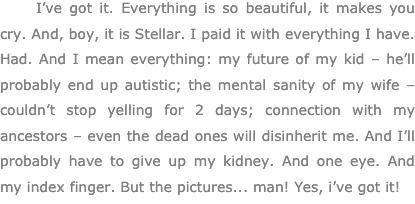HassyLover
New Member
- Joined
- Jan 28, 2013
- Messages
- 12
What you have not stated is the identity of the 35mm digital camera (and lens) you are using for this comparison.
How do you find the availability of 120 film? Is there much choice nowadays? Do you print in colour?
I use a Nikon D3 and use all of my older AIS Nikkors with it. They are all top quality glass and to be honest, I think most are at least as good or better than their modern day equivalents. Mechanically they are far superior in my experience. For digital it gives me great results but I will always be a film guy until I can no longer find film. Maybe one day I will be persuaded to drop another 3 grand on a Nikon D800 but I don't feel the need right now. The D3 is plenty for what I use it for and I have AIS Nikkors from 16mm to 600mm.
I do not have a problem finding 120 film and B&W paper and chemistries though there is only one place here in town which still stocks the 120 film. I use Kodak T-Max 100 for black and white and Kodak Portra or Ektar 100 for color depending on the subject. I do most of my Blad work in B&W but will do some in color. For color I use the same Beseler chemistries and drum process I have for over 35 years. Finding the color chemistries and paper is a lot more difficult than it use to be and I find myself having to get them all online. The problem with that is that the paper has been out of refrigeration for a period of time.
